Yogyakarta Traditional Clothing
Yogyakarta is one of the provinces that is famous for its thick culture, both physical and non-physical including traditional clothes.
Traditional clothing from Yogyakarta is very interesting to learn. Because there are various kinds of traditional clothes that have their own characteristics.
List of Yogyakarta Traditional Clothing
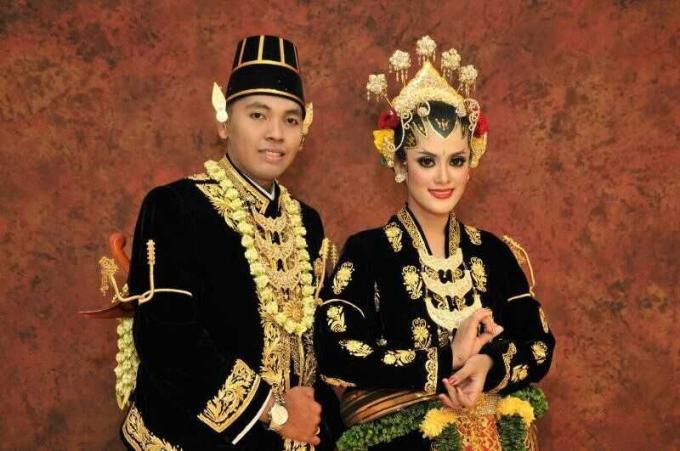
This Yogyakarta traditional clothing can be worn during official events or during daily activities.
Of course, official traditional clothes and traditional clothes for everyday are different.
Here are the traditional clothes from Yogyakarta that you should know:
Table of contents
1. Ageng's chivalry
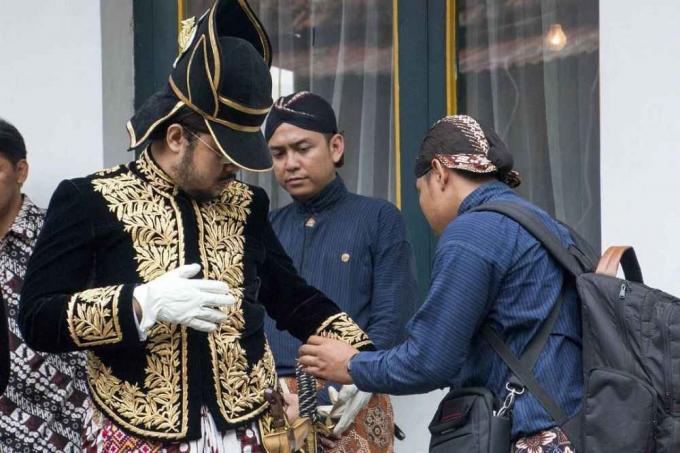
Kesatrian ageng is a traditional dress from Yogyakarta which consists of a laken suit, trousers, and batik cloth.
This laken suit made of black velvet is decorated with a kris and batik motif in the middle and a golden motif on the edges.
The trousers used also have the same color as the laken coat, which is black.
This batik cloth is wrapped around the hips with a length above the knee.
And don't forget to use it with various accessories and headdresses.
Kesatrian Ageng is a traditional dress used by male palace officials who are on duty.
Kesatrian ageng traditional clothes can symbolize the elegance and courage of a person.
These traditional clothes must be maintained and cared for in accordance with the regulations of the palace.
2. Sikep Alit
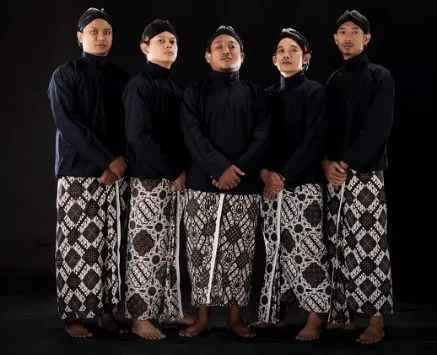
Sikep alit is a traditional dress worn by courtiers. Abdi dalem itself is a designation for palace employees.
Sikep alit consists of a dark blue top with buttons made of copper or brass and palm batik cloth.
The use of this sikep alit is equipped with several supporting accessories such as a headdress or headgear and a dagger which is placed on the back right waist.
This traditional dress is usually only used during special meetings or at dinner at the palace.
3. Langeran

Langeran is also a traditional dress used by courtiers which consists of clothes made of laken material, white shirts with standing collar models, and batik cloth.
The use of this langeran is equipped with several supporting accessories such as a bow tie, a gayman or ladrangan keris, and black sandals.
This traditional dress is also usually only used during special meetings or at dinner at the palace.
4. Atella Peran

Peranakan atela is a traditional dress that is also used by courtiers.
It is called peranakan because the peranakan has its own meaning, namely so that the wearer can establish a brotherhood like siblings.
Atela clothes have 2 colors, namely white and black, each of which has its own function.
The color white is usually used during big ceremonies. While black is usually used at certain events in Yogyakarta.
There are 6 buttons on the neck and 5 buttons on the ends of the sleeves.
The number of buttons has its own philosophy, namely 6 buttons on the neck symbolizing the pillars of faith, while 5 buttons on the ends of the arms symbolize the pillars of Islam.
5. Keprabon

Keprabon is Yogyakarta's traditional clothing which is usually used by the sultan when there is an ageng ceremony.
There are 3 types of traditional keprabon clothes, namely dodotan clothes, kanigaran clothes, and kaprajuritan clothes.
In general, dodotan clothes will only be used when there are ceremonial events such as garebeg, jumengeng dalem or the coronation of kings, and weddings or what is known as pisowana.
This Keprabon consists of:
- A blue kuluk decorated with mundri.
- Kampuh konca single.
- Timang or crepe.
- May the lace have a yellow color.
- Rante.
- Pethat orange sack.
- Dana chinde gubeg.
- carpet.
- Keris is proud.
6. Velvet Kebaya

Velvet kebaya is a kebaya used by women in Yogyakarta which can symbolize the behavior of women who must be gentle.
This kebaya is the same as Javanese kebaya in general. It's just that this Yogyakarta kebaya is made of velvet and tends to be black.
This kebaya is also available with materials other than velvet, namely silk, cotton, and so on.
The use of this kebaya is usually combined with jarik cloth which has a typical Jogja motif.
Do not forget to also be equipped with a variety of accessories including the following:
- Konde that can tidy up the hairdo.
- The red, green, and yellow buns can symbolize the trinity or the 3 gods of life.
- A mountain-shaped comb that can symbolize the majesty of God and the hope of creating a hope.
- A 3-layered necklace that can symbolize the 3 levels of human life, namely birth, marriage, and death.
- Bracelet without a base that can symbolize eternity.
7. Surjan

Surjan is a traditional Yogyakarta dress that is often used by men for the Grebeg ceremony.
Surjan is also called the Clothes of piety by the people of Yogyakarta.
Surjan motifs are very diverse, but the most often used is the surjan with brown and black stripes.
Usually surjan is combined with jarik cloth which has a typical Jogja motif and is equipped with blangkon as head accessories as well as sandals or footwear.
There are 6 buttons on the neck and 2 buttons on the right and left chest.
The number of buttons has its own philosophy, namely 6 buttons on the neck symbolizing the pillars of faith, while 2 buttons on the chest symbolize 2 sentences of creed.
Surjan is also a myth, namely if there are people who wear surjan properly, correctly, and complete with additional batik cloth, ropes, stagen, and belts. Then the wearer's weight will be stable.
8. Jarik

Jarik cloth is a cloth that is known as traditional Javanese clothing, including Yogyakarta.
Jarik also has a very diverse motif typical of Yogyakarta. The most famous jarik motifs are Sidomukti, Sidomulyo, and Sekar Jagad.
This finger cloth can be used for both men and women.
9. Samekanan and Samekanan Tritik

Samekanan is a traditional dress worn by the princess which consists of a cotton kebaya, batik cloth, and a long and wide chest covering.
The use of the same right is accompanied by various accessories such as hair buns without any decoration, scarves, earring, bracelets, and rings.
Meanwhile, the samekanan tritik is a traditional dress worn by married princesses.
Samekanan tritik is almost the same as the usual samekanan, which consists of a kebaya, batik cloth or jarik.
It's just that the accessories used are quite luxurious, namely plain buns, scarves, red handkerchiefs, earrings, rings, and bracelets.
10. Confusion

Kencongan is a traditional dress worn by boys in Yogyakarta.
The use of this kencongan is accompanied by various kinds of accessories such as scarves and belts or belts.
11. Sabukwala Padintenan
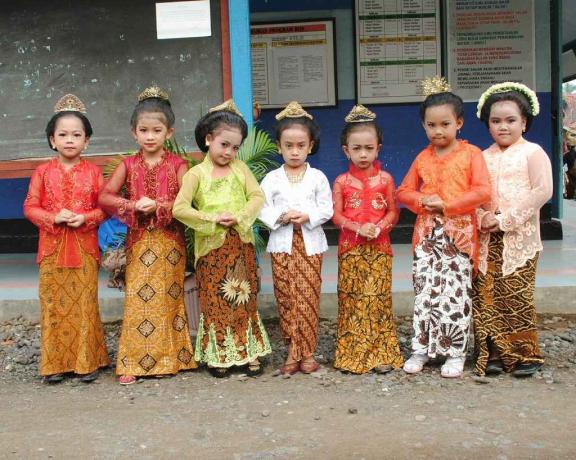
Sabukwala padintenan is a traditional dress worn by girls in Yogyakarta.
This traditional clothing consists of a top in the form of a cotton kebaya and batik cloth with a machete or circle pattern.
The use of this padintenan belt is accompanied by a variety of accessories including the following:
- Hair bun.
- Shawl.
- Belt or belt in the shape of a butterfly, peacock, or silver eagle.
- Gold necklace complete with currency pendant.
- A gold bracelet that has a snake-like shape.
The padintenan belt is divided into 3, namely the beltwala beside batik, the beltwala beside the praos, and the beltwala beside the cindhe.
The Uniqueness of Yogyakarta Traditional Clothing
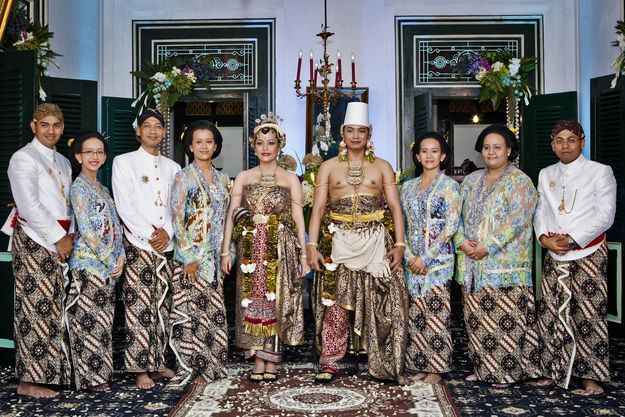
Just like traditional clothing from other regions, traditional clothing from Yogyakarta also has its own uniqueness, including the following:
- The material used is a material that does have a different texture than other traditional clothes.
- Identical to the black velvet material.
- Dark yellow stripe motif with pleats or ribbons of thread that has a golden yellow color.
- It has 5 functions contained in the kebaya, namely practical, aesthetic, religious, social, and symbolic.
- There is a mountain comb, a menthol, and a loose ukel hair.
Conclusion
Yogyakarta is very famous for its thick culture, ranging from physical and non-physical which is still very well preserved.
No wonder Yogyakarta is visited by many tourists who want to know about traditional clothes, tourist attractions, and other cultures.
